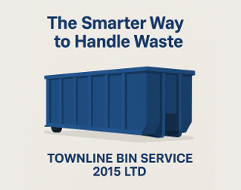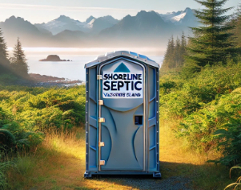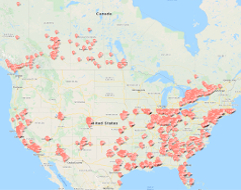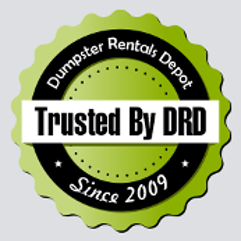Strategic Aspects of POP monitoring
At Dumpster Rentals Depot we have been continuously involved, on our own, and in collaboration with member disposal bin rental companies of our Dumpster Rentals Network, in the effort towards an international and Canadian treaty to eliminate persistent organic pollutants (POPs).
This post is published with the goal to raise government, industry, and public awareness of the potential effects of Persistent, Bio-accumulative, and Toxic Chemicals on the environment and health and to incite public and private actions to reduce the dissemination of these chemicals by proper junk disposal and waste recycling. We encourage Toronto disposal bin rentals and our other members waste hauling companies in major cities and rural areas to properly dispose the waste material sticking to the local bylaw and preserving the environment for our future generations.
Hoffmann M
1
., Galagan A.A., Mykhaylenko V. P., Godina O. O. and Seleznev, A. N.
?entre of Environmental Monitoring of Ukraine (CEMU), Kyiv
1. Introduction
Persistent organic pollutants (POPs) are known to be dangerous not only because of their toxicity and resistance against degradation. One of the main problems is their worldwide distribution in the environment, in food chains and even in humans. In the US and the EC, POP concentration in human fat tissue and breast milk has reached unexpected high concentrations. It was discussed if breast-feeding of babies can still be recommended. If one considers human bodies (hypothetically) as waste, they would have been to be treated as “special refuse” requiring a waste deposit place for dangerous materials. Fortunately, newer investigations have shown that the concentration of PCBs for example has already decreased in western countries due to counter measures.
Counter measures require sophisticated action plans that are based on the knowledge of POP occurrence in our environment. To gain this knowledge, it is necessary to monitor POPs all over the country in various environmental media for some time. This would be a huge task and would require a corresponding financial basis. It is therefore necessary to reduce the investigation volume and to set priorities.
Setting monitoring priorities concerns several aspects as
- Place of production
- Transport and storage
- Place of use
- Physical, chemical and biological influences on the further fate and distribution
2. Physico-chemical and biological behaviour of POPs
This presentation will highlight a few aspects only those are connected to the fourth item (see above). As an example, PCB has been chosen for further consideration in this paper. Fig. 1 shows the potential distribution paths of PCBs [1].
Fig. 1: Pathways of PCB distribution in the environmentThe potential distribution of PCBs through wind and water currents and erosion depends from the physico-chemical characteristics of those compounds.
- Structure and size of molecules
- Temperature of freezing and boiling
- Evaporation curve and volatility from water
- Fat and water solubility (measured as octanol-water partitioning coefficient)
- Adsorption and desorption
- Density, viscosity, permeability
- UV and light sensitivity
- Hydrolyse (depending on pH)
The further fate of PCBs and also other POPs depends on their resistance against abiotic degradation (connected to the above mentioned parameters) and against biotic degradation. The biological degradability very much depends from the same parameters as temperature, solubility, adsorption, permeability etc. One of the main factors however is the degree and type of chlorination. This factor has an influence on the distribution of POPs and their possible toxicity and degradation. It is therefore also an important strategic aspect for designing a monitoring program. Again PCB have been selected as example because they are widespread and highly dangerous for human health. The following figure shows the structure formula of the molecule.
Fig. 2: PCB molecule with figures indicating the possible Cl-positions [2]Polychlorinated Biphenyls (PCB) appear in the form of 209 Congeners (different molecules) with molar masses between 189 and 499 depending on the number of chlorine atoms; the table lists the possible number of congeners.
Table 1: PCB homologes and number of congeners in each homolog [2]| Homolog | Cl Substituents | PCB Congeners |
|---|---|---|
| Monochlorobiphenyl | 1 | 3 |
| Dichlorobiphenyl | 2 | 12 |
| Trichlorobiphenyl | 3 | 24 |
| Tetrachlorobiphenyl | 4 | 42 |
| Pentachlorobiphenyl | 5 | 46 |
| Hexachlorobiphenyl | 6 | 42 |
| Heptachlorobiphenyl | 7 | 24 |
| Octachlorobiphenyl | 8 | 12 |
| Nonachlorobiphenyl | 9 | 3 |
| Decachlorobiphenyl | 10 | 1 |
Because of the big number of possible variants, a system of sequential numbers, called "BZ Numbers" [3], for the 209 PCB congeners was introduced providing a method of identifying a given congener simply, precisely, and accurately. Today, the scheme of the International Union of Pure and Applied Chemistry (IUPAC) is commonly used. It overtook the same BZ numbers but changed the name of congeners in several cases.
PCB are produced and used as a mixture of congeners and can be found in special oils, colours, transformers, also in households, e.g. as softener in plastics. If the congener mixture is “highly halogenated” (up to 60 % of chlorine content) it will not be flammable anymore. This is why PCB were used mainly in open and closed systems to protect against fire. In Germany for example since 1972, the use of PCB is restricted to closed systems, in 1983 the production of PCB was terminated. Congeners with 1 to 4 Cl-atoms (<~ 30 % Cl) are called “weakly halogenated”. Compared with “weakly halogenated” PCB, “highly halogenated” PCB are
- less soluble in water (more lipophil)
- stronger enriched in the food chain
- less degradable by bacteria.
This is the reason why the proportion of “highly halogenated” PCB (compared to “weakly halogenated” PCB) increases in the food chain. After sufficient time for degradation, for example in river sediments, the proportion of “weakly halogenated” PCB can be increased. The following table shows examples of PCB accumulation in various materials.
Table 2: Examples of PCB concentrations detected in environmental samples and milk [1]| Type of sample | mg/kg |
|---|---|
| seawater (in mg/L) | (0.000 002) |
| sea sediment | 0.02 |
| sea mammals | 160 |
| freshwater sediment | 0.02 |
| macrophytes (water plants) | 0.04 |
| plankton | 0.39 |
| mussels | 0.6 |
| eggs of Podiceps cristatus (L.) (fish-eating bird) | 56 |
| cow milk | 0.01 - 1.6 |
| human breast milk | 0 - 10 |
The toxicity of PCB varies very much depending on the position of the chlorine atoms. If they are in the position 2, 6, 2’ and 6’ (compare fig.2) the PCB are ortho-substituted. They are known to have neurochemical and neurobehavioural effects. Non-ortho or mono-ortho substituted PCB show toxicological effects similar to those of dioxins. Some animals as dolphins are unable to degrade those non-ortho substituted compounds and are therefore highly endangered to accumulate lethal quantities [4].
3. Degradation
The degradation of POPs, especially of DDT and PCB, is known to be difficult and very slowly. This difficulty is increased after adsorption on soil particles and protection against UV radiation. The degradation of DDT is a question of decades that of PCB lasts even longer time. The process can be divided into following steps:
- hydrolyse
- dechlorination
- oxidations and reductions
The following statements are related on the degradation of PCB. In general one can say that
- the higher the chlorine contents of the compound, the more difficult the degradation process.
- The location of the Cl-atoms on the molecule is very important too: the p- and the m-configuration facilitate the degradation.
- If two neighbouring C-atoms are free of chlorine, the degradation will be easier. Free 3,4-positions are optimal for degradation.
- Hydroxy-derivates can be more toxic than the original compound.
4. Recommendations for the monitoring
The monitoring program should follow the usual international standards for planning, sampling, stabilisation and transport of samples [5, 6 and so on]. Like heavy metals POPs are enriched on adsorbing surfaces (clay, phytoplankton), the uptake through macrophytes is less important. Therefore, in case of water samples, it is recommended to analyse suspended matter (gained through centrifugation) or otherwise, if the whole water sample is analysed, the amount of suspended matter or phytoplankton should also be controlled.
Sediment samples have to be carefully selected. In natural waters, the local and spatial distribution of the different sediment types should be known and a decision been made on the depth of sediment sampling (depending on the investigated problem). In the laboratory, sediment samples should be sieved to exclude the biggest fraction (according to international standards > 2 mm) and additional determinations of “Co-factors” should be carried out as particle size distribution, content of organics etc. for further ecological interpretation.
If mussels are collected, the species should be identified and their age. Both parameters have an influence on the fat content.
The analytical procedures and information on the equipment complete the picture. As it is very labor intensive to analyse all 209 congeners, seven guide-PCB have been selected that were frequently produced and often found in environmental samples: According to an international agreement this concerns the PCB IUPAC Nr. 28, 52, 101, 118, 138, 153, 180. For the sum of these guide congeners (“S PCB7”) the European OSPAR commission has defined threshold values for fish and mussels. For sediments, German investigators have found that S PCB7 is critical if 450 mg/kg (dry weight) is exceeded; in case of higher values PCB cam be expected in fish as well [7]. Comparisons with literature data will only be possible if all monitoring methods are accurately harmonised.
5.First results of Danube delta monitoring and comparisons
Monitoring of a selected number of POPs in the frame of the Danube delta monitoring programme [8, 9] is one of the tasks that have been overtaken from the Centre of Ecological Monitoring of Ukraine. Sampling was started in autumn 2004 and will be continued 3 times per year until 2006. The analyses of PCB were carried out by the L.I.Medved Institute of Ecohygiene and Toxicology, Kyiv. Results of sediment analyses are related to the dry weight of the complete sample, mussel results are related to the wet weight of the soft part and water samples have been used unchanged. Beside the compounds listed in the following table, 8 different poly-aromatic hydrocarbons (PAH) have been additionally analysed.
Table 3: Results of PCB analyses, given in mg/kg, from different sample types collected in the Ukrainian part of the Danube delta. (PDK = 0.06 mg/kg; Sanitary norm ?4433-87 related to soil samples)| Sample -? - - - - - - - - - - - - - - - - /Homolog | Sediment 02 | Sediment 03 | Sediment 04 | Mussel 02 | Mussel 03 | Water 02 | Water 03 | Water 04 |
|---|---|---|---|---|---|---|---|---|
| Monochlorobiphenyl | <0,0001 | >0,0001 | >0,0001 | 0,0114 | 0,0065 | >0,0001 | >0,0001 | >0,0001 |
| Dichlorobiphenyl | <0,0001 | <0,0001 | <0,0001 | <0,0001 | <0,0001 | <0,0001 | <0,0001 | <0,0001 |
| Trichlorobiphenyl | 0,0100 | 0,0143 | 0,0086 | <0,0001 | <0,0001 | 0,0004 | 0,0005 | <0,0001 |
| Tetrachlorobiphenyl | 0,0049 | 0,0027 | 0,0049 | 0,0072 | 0,0009 | 0,0001 | <0,0001 | <0,0001 |
| Pentachlorobiphenyl | 0,0063 | 0,0083 | 0,0065 | 0,0017 | 0,0020 | 0,0003 | 0,0002 | <0,0001 |
| Hexachlorobiphenyl | 0,0036 | 0,0025 | 0,0014 | 0,0063 | 0,0066 | 0,0003 | 0,0001 | <0,0001 |
| Heptachlorobiphenyl | 0,0060 | 0,0040 | 0,0042 | 0,0184 | 0,0071 | 0,0001 | <0,0001 | <0,0001 |
| Octachlorobiphenyl | <0,0001 | <0,0001 | <0,0001 | <0,0001 | <0,0001 | <0,0001 | <0,0001 | <0,0001 |
| ? PCB | 0,0308 | 0,0318 | 0,0256 | 0,0450 | 0,0231 | |||
The results show that highly chlorinated congeners as octachlorobiphenyl have not been detected. The same is true for nonachlorobiphenyl and decachlorobiphenyl that are not listed in the table. The sum of PCB concentrations in the mussels (Sinanadonta woodiana ) differ very much. In comparison with the sediment analyses they contain more highly chlorinated compounds (heptachlorobiphenyl) than the sediments. This can be connected to their higher fat content. On the other hand, sediments contain more weakly chlorinated compounds as trichlorobiphenyl. The reason could be the less lipophil character of those compounds or the result of the beginning bacterial degradation.
The water samples are also contaminated, but for an assessment of results it is necessary to clarify further details and to await future monitoring results.
Literature
- SCHWEDT, G. (1996): Taschenatlas der Umweltchemie – G. Thieme Verlag, Stuttgart. ISBN 3-13-103111-5 (in German)
- BALLSCHMITER and ZELL (1980): Analysis of polychlorinated biphenyls (PCB) by glass capillary gas chromatography. Fresenius Z. Anal. Chem. 302:20-31. 1980.
- BODO, B. A. (1998): An Assessment of Environmental and Aquatic Ecosystem Contamination by Persistent Organochlorine Pollutants (POPs) in the Russian Federation – GEMS, Burlington, Canada
- EN ISO 5667-3 (in English), (2002) : German title : Wasserbeschaffenheit – Probenahme – Teil 3: Anleitung zur Konservierung und Handhabung von Proben (ISO/DIS 5667-3:2002)
- EN ISO 5667-19 (in English), (2002): German title: Wasserbeschaffenheit – Probenahmeverfahren – Teil 19: Anleitung zur Probenahme von Sedimenten in der marinen Umwelt (ISO/DIS 5667-19:2002
- Umweltbundesamt FG II 3.6 (2000): Erfahrungsaustausch „Marines Sediment Monitoring“, 4.7.-5.7. 2000 Koblenz – Conferece minutes of the AG Qualitaetssicherung des Bund/Laender-Messprogramms Nord- und Ostsee (in German)
- KVET, J. and SALATH, T. (2003): Mission Report Danube Biosphere Reserve / Kyliiske Mouth Ramsar Site Ukraine 27-31 October 2003
- Ministry of Environment of Ukraine: Conclusion by the Ministry of environment of Ukraine of the state environmental review of the working design documents on the project "construction of the Danube-black sea deep-water navigation route in the Ukrainian part of the Danube delta: phase 1"; http://www.ukraine-eu.mfa.gov.ua/cgi-bin/valmenu_miss.sh?1p0201.html
Contact person to whom your questions should be addressed
Email:
contact@cemu.kiev.ua
, Tel. +38 044 266 0273
- Published: 2010-10-16T21:37:02-07:00
- Author: Grant Rowe






